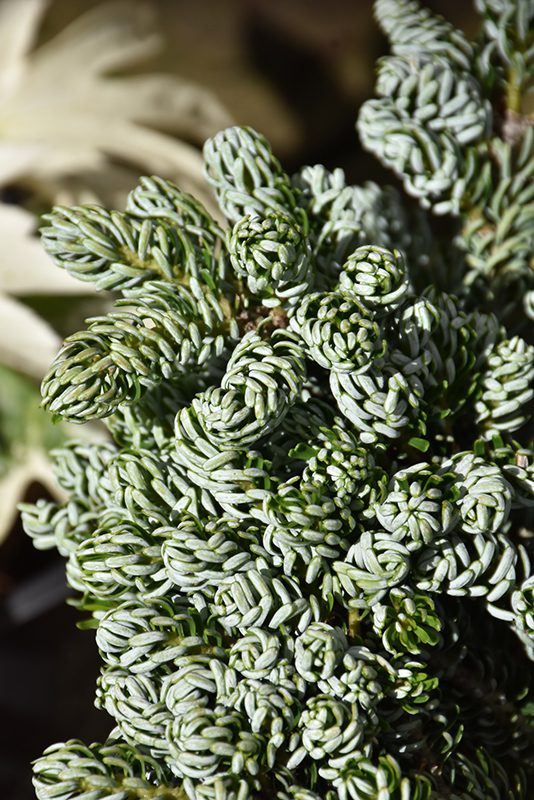Fir, Korean Icebreaker Abies koreana 'Kohout's Icebreaker' Height: 12 inches Spread: 18 inches
Sunlight:
Hardiness Zone: 4b Other Names: Ice Breaker Korean Fir Description: A stunning dwarf selection with amazing year-long color; curved green needles display their shimmering, silvery white undersides, creating a striking effect in the garden; young plants are global, later developing a leader, becoming a small, squat shrub Ornamental Features Fir, Korean Icebreaker is a dwarf conifer which is primarily valued in the garden for its decidedly oval form. It has attractive forest green foliage with silver undersides. The recurved needles are highly ornamental and remain forest green throughout the winter. Landscape Attributes Fir, Korean Icebreaker is a dense multi-stemmed evergreen shrub with a shapely oval form. It lends an extremely fine and delicate texture to the landscape composition which should be used to full effect. This is a relatively low maintenance shrub, and should not require much pruning, except when necessary, such as to remove dieback. It has no significant negative characteristics. Fir, Korean Icebreaker is recommended for the following landscape applications; Planting & Growing Fir, Korean Icebreaker will grow to be about 12 inches tall at maturity, with a spread of 18 inches. It tends to fill out right to the ground and therefore doesn't necessarily require facer plants in front. It grows at a slow rate, and under ideal conditions can be expected to live for 60 years or more. This shrub does best in full sun to partial shade. It prefers to grow in average to moist conditions, and shouldn't be allowed to dry out. This plant should be periodically fertilized throughout the active growing season with a specially-formulated acidic fertilizer. It is not particular as to soil pH, but grows best in sandy soils. It is quite intolerant of urban pollution, therefore inner city or urban streetside plantings are best avoided. Consider applying a thick mulch around the root zone over the growing season to conserve soil moisture. This is a selected variety of a species not originally from North America. Special Attributes Evergreens need to be watered during the winter. Our desert climate especially in late winter to early spring evergreens can suffer during next growing season. An easy way to remember check for dryness on the holidays Halloween, Thanksgiving, New Year's Day, Valentines Day & Easter.![]()
![]()
![]()
![]()
![]()
![]()
![]()
![]()
![]()
![]()
![]()
![]()
![]()

